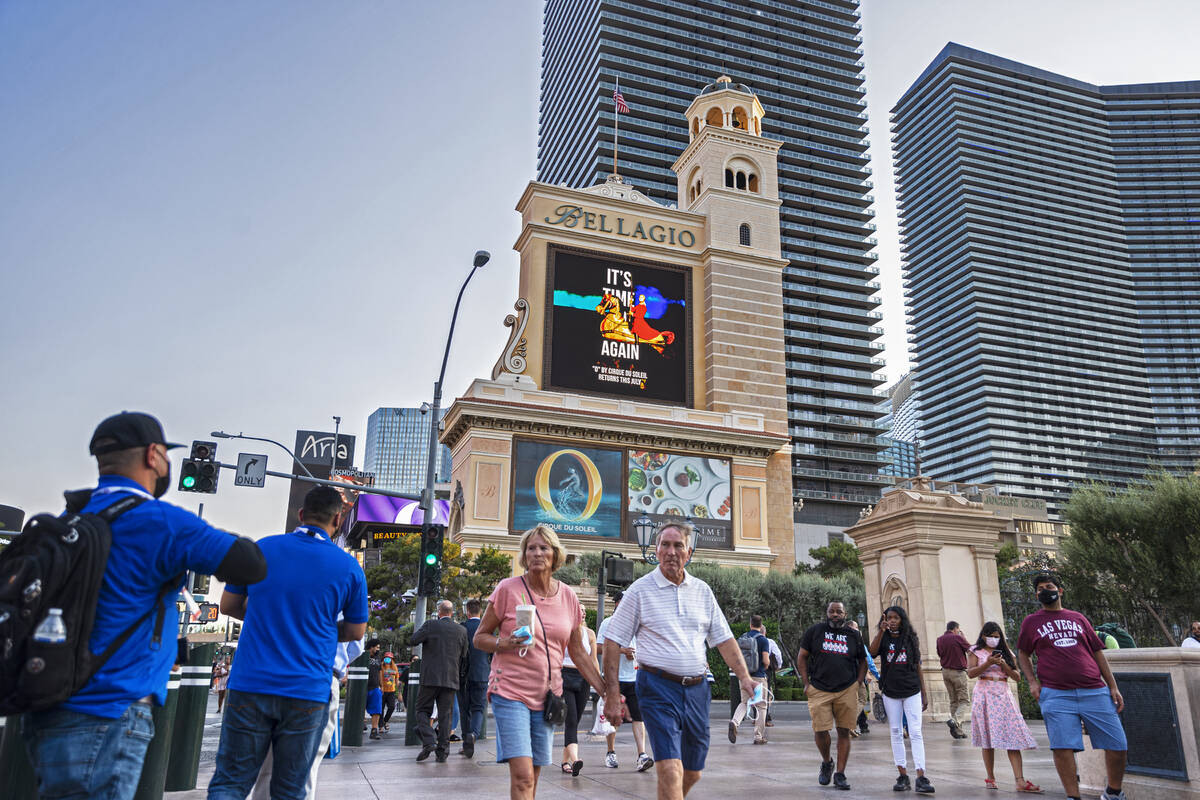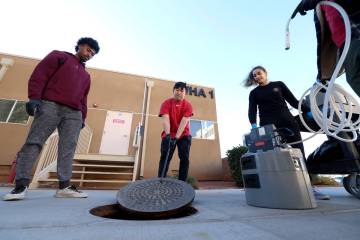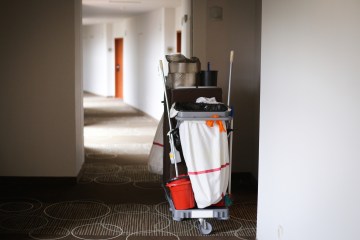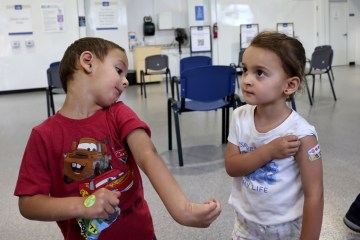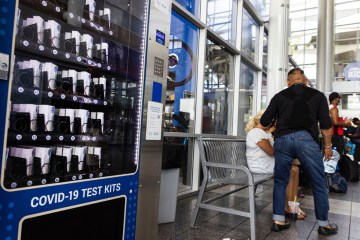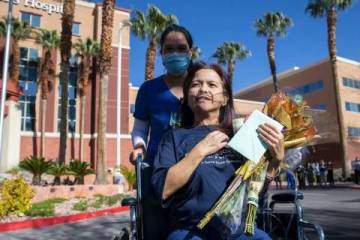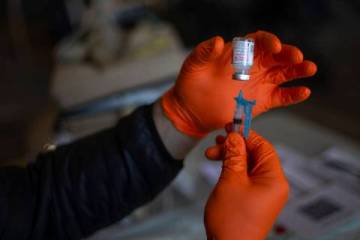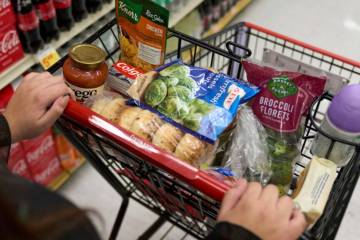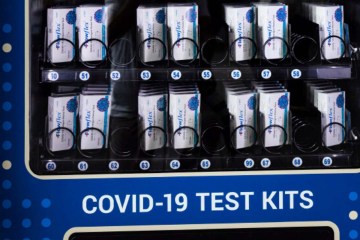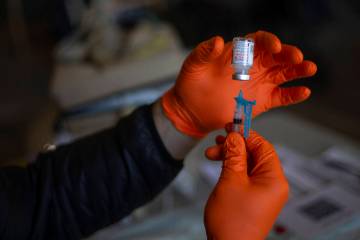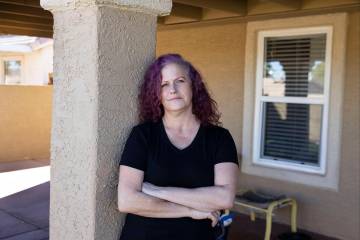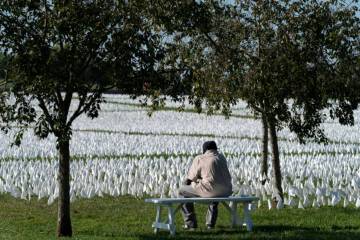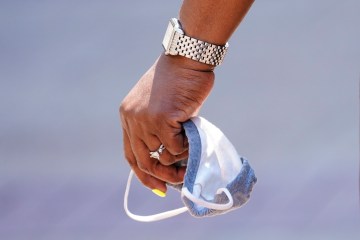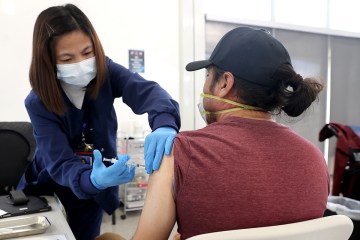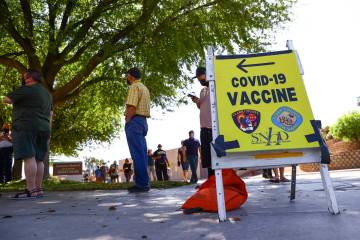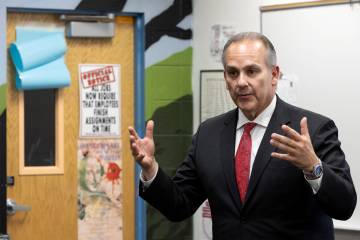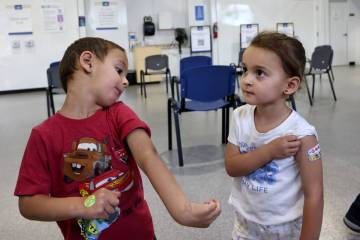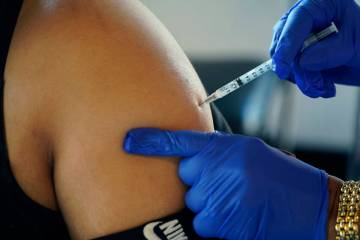3 of Clark County’s 4 key COVID-19 metrics improve week over week
Three of Clark County’s four major COVID-19 metrics improved over the past week, adding to evidence that the coronavirus is at least temporarily in retreat in Nevada’s most populous county.
The two-week moving average of new COVID-19 cases in the county dropped more than 10 percent, from 409 per day a week ago to 367, according to state and county data posted Friday. The test positivity rate, which tracks the percentage of people tested for COVID-19 who are found to be infected, fell 0.5 percentage points from 8.4 percent to 7.9 percent. And hospitalizations decreased by 1.68 percent to 642.
Only fatalities attributed to the disease caused by the new coronavirus resisted the downward pull, remaining unchanged at eight per day over the period.
All four metrics have been on the downswing since mid to late August, though new cases and the test positivity rate have fallen faster than hospitalizations and deaths — both of which are considered lagging indicators that don’t reflect changes in infection rates until weeks after they occur.
Those trends were reflected in updated statistics from the Southern Nevada Health District posted Friday, which showed 545 new COVID-19 cases and nine deaths in the county during the preceding day. Those figures pushed totals to 320,777 COVID-19 cases and 5,660 deaths.
Long-term trends pointing down
The health district has reported fewer daily cases than Friday’s total several times this week, but because state and county health agencies often redistribute daily data after it is reported to better reflect the date of death or onset of symptoms those lower totals have since been adjusted higher.
Data guide: COVID-19’s impact on Nevada
After such adjustments, Friday’s daily figures were the lowest since the health district reported 537 new cases on July 11 and eight deaths on July 19, according to state data
New cases in the county were far above the two-week moving average of 367 per day, though the longer-term measure clicked down by one from the preceding day, the data showed.
Fatalities attributed to the disease caused by the new coronavirus were slightly above the daily average of eight for the period, with the latter measure unchanged from the previous day.
The county’s two-week test positivity rate remained unchanged at 7.9 percent, the state data showed.
Hospitalizations of confirmed and suspected COVID-19 patients in the county reversed course after back-to-back increases, declining by 19 from the day prior to 642, it indicated.
The health district separately reported late Thursday on so-called breakthrough cases, saying it had recorded 32 hospitalizations and 12 additional deaths in fully vaccinated individuals over the previous week.
Those figures raised breakthrough totals for the county to 482 hospitalizations and 158 deaths.
Breakthroughs account for small percentage of COVID-19 hospitalizations and deaths, though the rate has been rising in recent months.
Breakthrough cases rising
For September, for example, breakthrough cases among the fully vaccinated represented 21.43 percent of total cases vs. 78.57 percent of those who were either unvaccinated or partially vaccinated, according to data from the Centers for Disease Control and Prevention.
Public health officials say that vaccinated patients are less likely than the unvaccinated to become seriously ill or die if they are infected than their unvaccinated counterparts. Elderly vaccine recipients and those with underlying health conditions, however, are at higher risk of serious complications if they become infected, they say.
Overall the county’s breakthrough case rate for vaccinated stood at 959 per 100,000 population, vs. 25,225 per 100,000 for the unvaccinated. The death rate for the vaccinated was 14 per 100,000 compared to 447 for unvaccinated individuals.
Meanwhile, the state Department of Health and Human Services on Friday reported 1,140 new COVID-19 cases and 43 additional deaths over the preceding day. The updated figures pushed state totals to 421,319 cases and 7,150 deaths.
New cases were well above the two-week moving average of 683 per day, which nonetheless declined by nine from Thursday’s report.
Fatalities were more than three times the average for the period of 13 per day, which was down by one from the day prior.
The state’s test positivity rate shed 0.2 percentage points from the preceding day to 10.1 percent.
Remembering Nevadans lost to COVID-19
There were 901 patients with confirmed or suspected COVID-19 cases occupying beds in state hospitals, 21 fewer than on Thursday.
Valley hospitals accepting rural patients
The Nevada Hospital Association said in its weekly update that recent declines in COVID-19 related hospitalizations indicate that the state has “crested the current wave of illness,” though it noted that rural counties “continue to be hard hit, with most staffed rural ICU beds at 100 percent occupancy.”
The trade group also noted that the strain at rural facilities is resulting in hospitals deviating from normal patterns and sending more patients to facilities in Clark County. But it added that the situation at Las Vegas Valley hospitals has improved to the point where they are accepting transfers from other states, including Texas, Idaho, Utah, California and Arizona.
That could account for several increases in the county’s daily hospitalization numbers reported during the week.
Despite the improvement, all hospitals continue to face staffing challenges, the association said.
Contact Mike Brunker at mbrunker@reviewjournal.com or 702-383-4656. Follow @mike_brunker on Twitter.
Nevada vaccinations
— 12+ population: 2.64 million.
— Doses administered: 3.10 million.
— Vaccinations initiated: 1.74 million.
— Vaccinations completed: 1.49 million.
— Eligible fully vaccinated: 55.75 percent.
Sources: U.S. Census Bureau; Nevada Department of Health and Human Services



